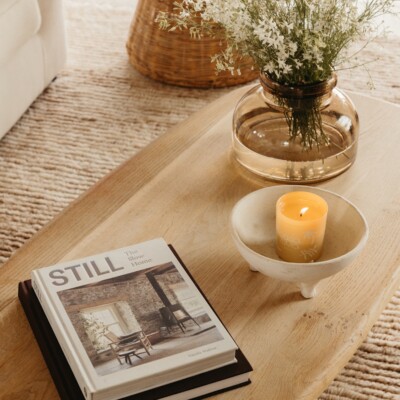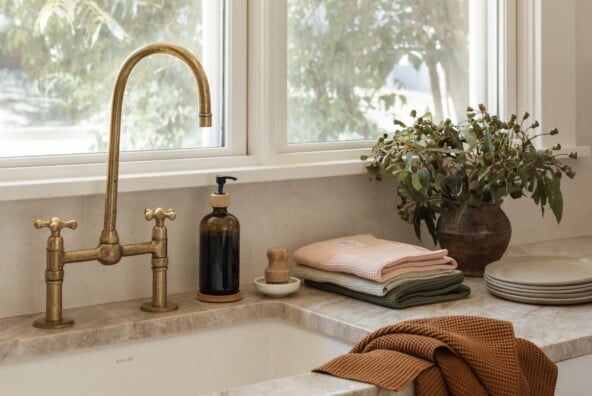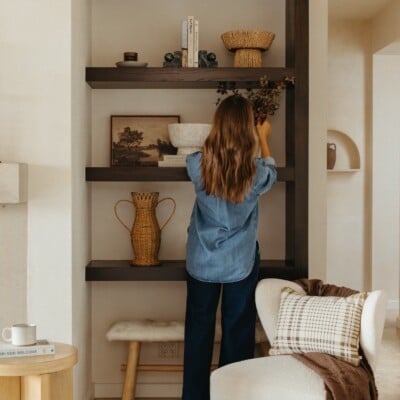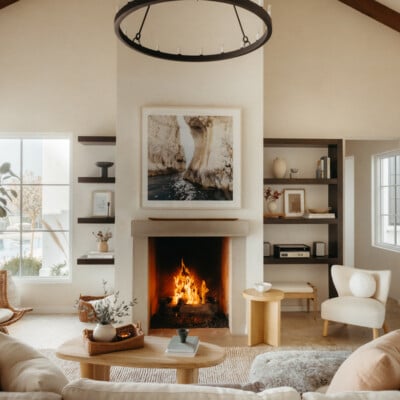One of the simplest joys in my life right now is walking through my neighborhood and admiring my neighbors’ hydrangea bushes. Not every house has them, but the ones that do exude effortless beauty. They’re a burst of pink or blue blooms that I’m savoring, since I know hydrangea season doesn’t last forever. They remind me that color makes an incredible impact, especially when it’s part of a garden in front of your home. The lush pink blooms are friendly and inviting. They emit an air of playfulness, while the deep blue hydrangea bushes seem more peaceful and grounded in their beauty. Garden color schemes clearly set the mood for your outdoor living spaces, and it’s a step you don’t want to skip when planning your garden.
If you’d like to plant a garden but aren’t sure where to begin, I chatted with mother-daughter duo Brooke and Leila Giannetti, garden designers at Patina Meadow, as well as Madeline Hooper, host of the PBS TV show Garden Fit, to get their pro tips on all things garden color schemes. Ahead, learn how to design your garden with color in mind, as well as the best color schemes to try yourself!

Where to Begin When Planning Your Garden
Before you head to the nursery, both Giannetti’s suggest taking time to think about the mood you want to set, as well as the intention you have for your outdoor space and garden. “Are you looking to grow food for your family? Are you trying to create a space mostly for visual interest? Either way, there are a few design tips to keep in mind,” the duo suggests.
Just like you would an interior space, they encourage using hedges and trees to enclose spaces, like an outdoor room. “This creates a sense of intimacy and privacy, almost like different rooms in a house.” As far as picking which plants and flowers are right for your garden, Hooper says to lead with your heart and to not think too hard about what’s right or wrong. “Surround yourself with colors you love,” she says. “Allow yourself to react to what surprises you and delights you about a garden.”
Hooper also suggests noticing what plants and flowers are working for your neighbors—that means the conditions you both share work well! And finally, if you’re feeling nervous as a beginner gardener, Hooper encourages taking some pressure off and to have fun. “It truly doesn’t matter how you start. You make mistakes. Plants die. You learn by trial and error!” she exclaims.
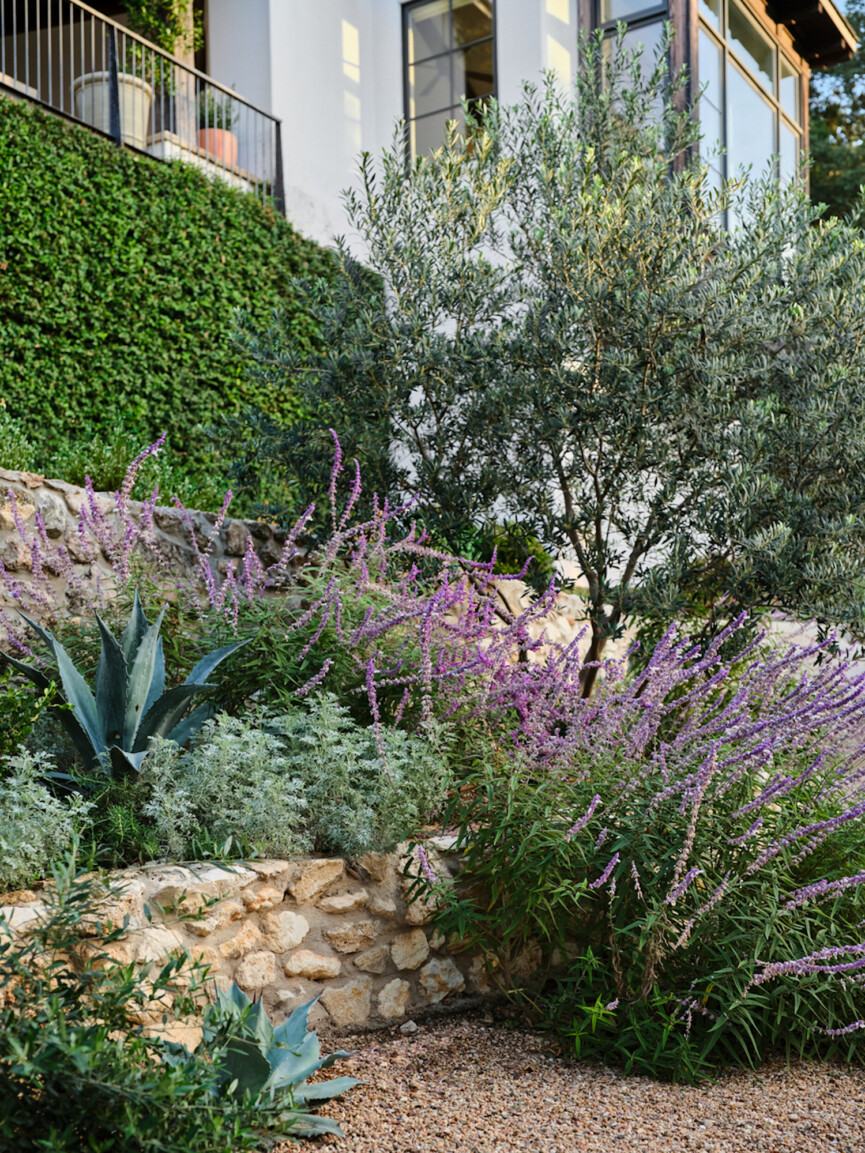
Why a Color Palette Is Important
“A garden color scheme provides unity and coherence in garden design. It ensures that all elements work together harmoniously, creating a space that is not only visually appealing, but also emotionally resonant,” the Giannetti’s share. “A cohesive color palette helps avoid visual clutter and creates a sense of calm and order, which is particularly important in a garden meant for relaxation and enjoyment.”
If you’re not sure what colors look best together, or just feel afraid to commit, Hooper suggests pots to start. “You don’t have to make the commitment to dig them into the ground necessarily,” she remarks. Knowing what colors and flowers you’re drawn to—as well as the ambience you’d like your outdoor space to have—will set the tone for creating the garden of your dreams.
“Ultimately, your garden should reflect your tastes and preferences. Choose colors that make you happy and create a space where you love to spend time!” the Giannetti’s add.
Four Garden Color Schemes We Love
You can’t go wrong with the following garden color schemes, recommended by Hooper and the Giannetti’s. Ranging from sweet and soft to dramatic and bold, choose the garden color scheme that speaks to your heart—as well as the outdoor space you’re longing to create.
Soft Pastels
If you envision a garden fit for afternoon reading, morning meditation sessions, or casual dinner parties, a pastel color palette would be the dream. “We absolutely adore soft pastel palettes—light lavenders, pale pinks, and soft whites. This combination evokes feelings of calm, serenity, and soothing tranquility,” the Gianetti’s share. Hooper is also a fan of this color palette. “In my garden around the pool, I like to stick to cool pastel colors that go with the water color and gray stone coping,” she explains.
Hooper loves various shades of pinks, blues and yellows and shares that Achillea moonshine, Astilbe ‘Peach Blossom’ and Geranium Roxanne look better and better in her garden each year. Both Giannetti’s love mixing purple with pink or white. “For a soft pastel palette, we would use plants like lavender and thyme, which not only add beautiful pastel hues but also a wonderful scent,” they share. “Pair these with pink and white roses or hydrangeas. The key is to maintain a limited palette and focus on texture for added interest.”
Deep, Rich Hues
If you have an eye for the dramatic and want your home to pop, darker colors may be more your speed. The Giannetti’s recommend pairing deep, rich florals with lush greenery. “Dark tulips in spring, and rich purple hydrangeas in summer are excellent choices,” they advise. “Complement these with foliage plants like boxwoods and yews to add some structure, while complementing the color scheme. You could even add blackberry vines to add a functional touch of rich beauty!”
Blackberry vines will, of course, produce fruit and the berries will turn from a deep red to black as they ripen, naturally providing a beautifully rich color palette. Another option? Orange and yellow blossoms provide stark contrast to deep purple blooms, making purple and orange an unexpected, yet beautiful color scheme to try. Mix gold and orange avens (Geum spp.) or yellow Hollyhock Alcea ’Spotlight Sunshine’ with purple or crimson scabiosa (or pincushion flower) for a stunning jewel-toned garden.
Monochromatic
A garden color scheme doesn’t need to include multiple colors. In fact, going monochromatic and picking just one color is a fantastic choice, especially if you have a color you’re especially fond of. For Hooper, that color is red. “The dramatic effect of planting beds or borders of one color is also a fun challenge, and for years I have had a red color-themed bed that I adore,” she gushes. “It’s more upkeep because I have to replant Dahlias Bishop of Llandaff each season, but they look great with red peonies, Dianthus Telstar Scarlet, and Echinacia purpurea ‘Sombrero Salsa Red’.”
“Combining different blooms in similar colors—like light lavenders from herb plants such as lavender and thyme, with pink and white rose varieties or hydrangeas—adds depth and variety without overwhelming the senses,” the Giannetti’s note. As with any garden color scheme, decide on the mood you want to create for your garden, then choose your color accordingly. A blue garden with blue hydrangeas, Phlox paniculata ‘Blue Boy’ or Delphinium ‘Million Dollar Blue’ will be calm and serene. A yellow garden with Alchemilla mollis or Baptisia ‘Caroline Moonlight’ will be bright and cheerful.
Keep in mind that a monochromatic garden can include various shades of the same hue, so don’t be afraid to plan your purple garden with pale lavenders as well as deep purples that almost read black. “Even with a limited color palette, you can create a lot of visual interest through texture,” the Giannetti’s add.
Rewilding
If you’re interested in a maximalist color palette where anything goes, rewilding is a garden trend you’ll love. Also referred to as meadowscaping, this garden trend relies on native grasses and wildflowers being allowed to grow freely.
“This idea of garden chaos being positive is a big deal,” Hooper remarks. “If you want different colors, you can do that, and it looks smashing.” If you have dreams of running through your own wildflower meadow, see what many would typically consider weeds in a new light. “Whatever seeds are in the soil—let them grow,” Hooper suggests. “Then keep what you like, and pull out what you don’t like.”
You can learn what is native to your area by doing a quick search through the National Audubon Society. From there, notice what colors and plants you’re drawn to. Because rewilding is in fact a bit wild, your color palette can remain simple if that’s more your vibe. Stick with a monochromatic palette and choose flowers in the same shade, or select up to four different hues for a multi-color meadowscape.



